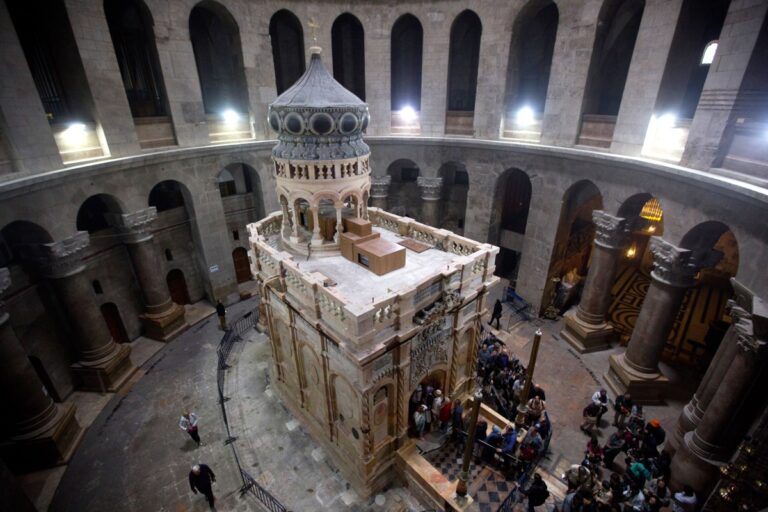Recent, groundbreaking excavations beneath the Church of the Holy Sepulchre have yielded extraordinary results. Italian archaeologists have uncovered evidence suggesting that the site, traditionally believed to encompass Jesus’ tomb, was once a flourishing garden.
The Gospel of John describes Jesus’s burial place as being located “in a garden,” a detail that serves as a powerful literary contrast to the site of his crucifixion at Calvary. This description, while evocative, lacks specific details about the tomb’s location.
However, a new discovery, as reported in the Times of Israel, may provide further insight. The ongoing excavation beneath the Church of the Holy Sepulchre, a site revered by Christians worldwide, has revealed traces of 2,000-year-old olive trees and grapevines. This finding supports the Gospel of John’s account and suggests that the area was indeed used for agriculture.
The Church of the Holy Sepulchre has long been a focal point for Christian pilgrims, believed to encompass both the site of Jesus’s crucifixion and his burial. However, archaeological investigations have been hampered by various factors, including conflicts between the religious communities managing the church.
In 2019, these communities finally reached a consensus to renovate the church’s 19th-century floor. This provided an opportunity for archaeologists from La Sapienza University to conduct excavations. Francesca Romana Stasolla, who leads the excavation team, noted that the religious communities agreed to allow archaeological work during the renovations.
The excavation team, comprised of archaeologists and specialists, discovered that the quarry beneath the church, dating back to the Iron Age, was used as a burial site during Jesus’s time. Constantine, the first Roman emperor to convert to Christianity, identified this quarry as the site of Jesus’s burial, leading to the construction of the first Church of the Holy Sepulchre.
The recent discovery of the 2,000-year-old garden further illuminates the history of this significant site. Stasolla’s team found evidence that the area, between the time the quarry was mined and the church was built, had been used for agriculture. Low stone walls were erected, and the spaces between them were filled with dirt, creating cultivated fields.
While a full analysis of the artifacts, including coins and pottery, will take years, Stasolla emphasizes the importance of the discovery. She notes that, regardless of one’s belief in the historicity of the Holy Sepulchre, the site’s history reflects the faith of generations of people and its significance in the history of Jerusalem and the worship of Jesus Christ.



